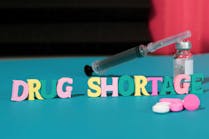As the Food and Drug Administration (FDA) rolls out its Unique Device Identification rule that requires manufacturers to assign and label their products with unique device identifiers (UDIs), the complexities of the regulatory landscape and the variation in processes across the healthcare delivery system continue to be illuminated.
Take human cells, tissues and cellular and tissue-based products, better known as HCT/P, as an example. These include a wide range of tissue and cellular products including arteries and veins, bone grafts, heart valves, cornea, skin and tendons. The production and distribution of these products are regulated by the FDA Center for Biologics Evaluation and Research (CBER), one of six main centers within the FDA, but separate from the Center for Devices and Radiological Health (CDRH), which is responsible for the UDI rule. However, a few HCT/P, such as tendons with sutures attached, demineralized bone products combined with certain handling agents and femoral veins intended as A/V shunts, are considered medical devices and therefore covered by the UDI rule. The use of these products falls under the jurisdiction of The Joint Commission, which requires healthcare organizations to create standardized processes around the acquisition, receipt, storage and issuance of these products. The Joint Commission also requires that systems document the use of HCT/P in a recipient’s medical record; if the HCT/P is considered a medical device, that documentation must use the UDI. Also, while individual healthcare delivery organizations might have standardized processes, there is significant variation among facilities, even within the same parent system.
The 2015 Edition Health Information Technology Certification Criterial Final rule also requires that the UDIs for implantable devices — including those for implanted HCT/P that are considered medical devices — be represented with a UDI in a patient’s electronic health record (EHR), and the UDI must be able to be parsed into the device identifier (DI) and the production identifier (PI). For most medical devices, the PI includes the lot, batch or serial number and the expiration date — whatever the manufacturer uses to control production of the product. For HCT/P, the production identifier must also include a distinct identification code (DIC) that can be traced back to the donor. ICCBBA, one of UDI issuing agencies authorized by the FDA and specializing in HCT/P, has a dedicated production identifier for the DIC, known as the Donor Identification Number, which is embedded in the ISBT 128 (ICCBBA’s UDI compliant code). A single Donor Identification Number can be used to identify all of the tissue products prepared from a particular donor by a specified tissue processor. The only time there is a different PI for tissue from the same donor is when that tissue is processed by a different tissue bank.
Despite safety precautions, tissues have been implanted into recipients, only later to have it discovered that the donor had an infection that can be transmitted through transplantation. The ISBT 128 is designed to rapidly identify affected HCT/P by minimizing the numbers associated with tissue from the same donor. In the event of a recall, a single Donor Identification Number can be used to find all of the impacted tissue from that donor that was processed by a specific tissue bank. Without the Donor Identification Number, every piece of tissue has a different lot and/or serial number, even if it came from the same donor, greatly increasing the complexity of recall management.
In 2011, when it was discovered that tissue donated by a man infected with hepatitis C virus (HCV), it took a month for the tissue processor to notify all of the surgeons who had implanted some of the infected donor’s tissues into their patients. Because data on the surgeons was not uniformly available, tissue from the infected donor continued to be used after the infection was first discovered. This is another consequence of lack of standardization: When different facilities or individual clinicians manage HCT/P differently, it becomes more difficult to take effective action quickly. And when tissue products are handled manually, it is very difficult to distinguish the DIC. Electronic systems, on the other hand, can be programmed to recognize the Donor Identification Number in the ISBT 128 code.
Further complicating things are the multiple regulatory agencies and evolving requirements, e.g., UDI, and variation as to which departments or functions within healthcare delivery organizations have responsibility for HCT/P. Sometimes it is the blood bank, other times the OR or materials management. Hospitals and other healthcare providers are facing increasing regulatory requirements, from multiple agencies.
Once again, I believe the UDI rule, while aimed at manufacturers, creates an opportunity to break down some of the silos that exist in the provider environment. Who has responsibility for HCT/P in your hospital? Who will be responsible for ensuring UDIs are captured in EHRs for implantable devices? Have you begun considering how you will use UDIs to better manage supply chain and revenue cycle processes? Are your IT systems capable of handling UDIs or are you still managing implantable devices and HCT/P manually? Are you collaborating with different departments and clinicians to solve for new regulatory, technology and process challenges, or are you problem solving in silos? Please share your challenges and solutions, even if they are works in progress. We are all in this together and can learn from one another.

Karen Conway | CEO, Value Works
Karen Conway, CEO, ValueWorks
Karen Conway applies her knowledge of supply chain operations and systems thinking to align data and processes to improve health outcomes and the performance of organizations upon which an effective healthcare system depends. After retiring in 2024 from GHX, where she served as Vice President of Healthcare Value, Conway established ValueWorks to advance the role of supply chain to achieve a value-based healthcare system that optimizes the cost and quality of care, while improving both equity and sustainability in care delivery. Conway is former national chair of AHRMM, the supply chain association for the American Hospital Association, and an honorary member of the Health Care Supplies Association in the UK.





